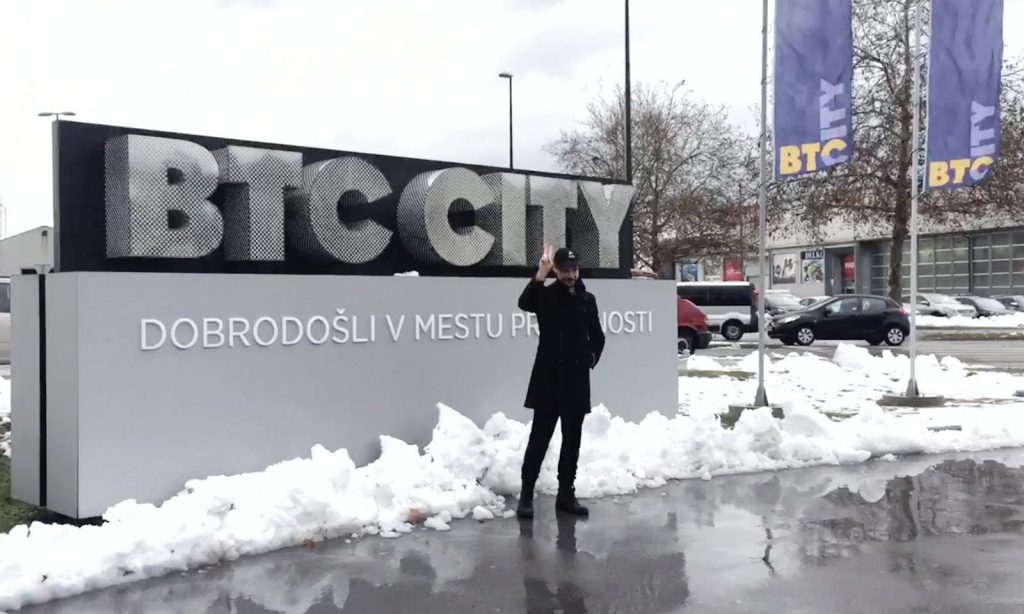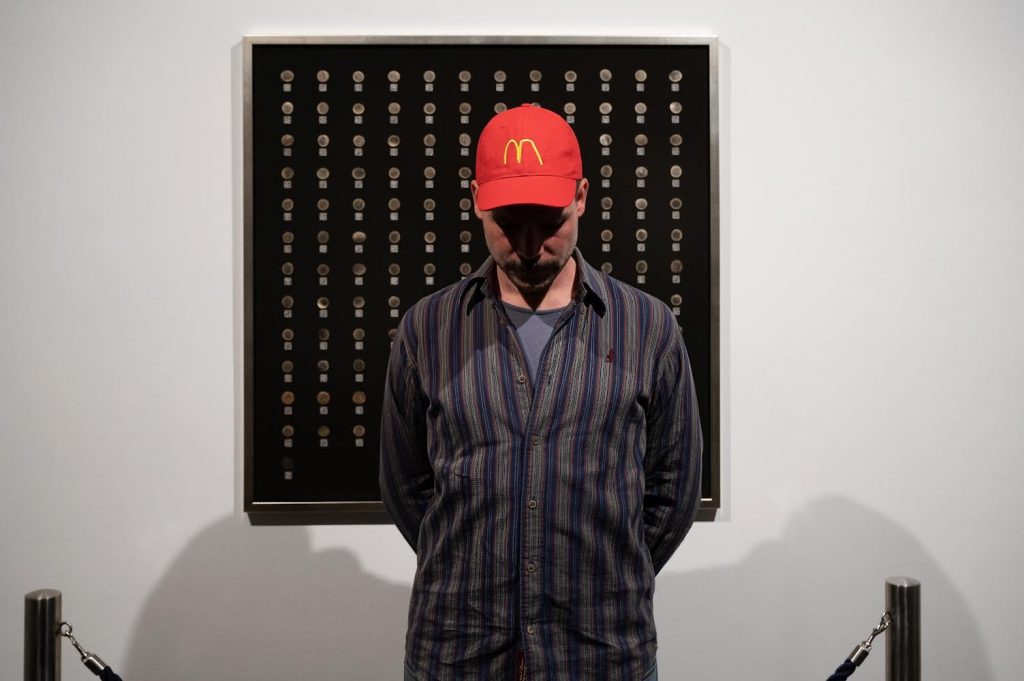NFTs
Crypto Artist The Miha Artnak Tricked the World Into Believing He Created a Bitcoin City. Now, He’s Minting a New Series of NFTs
For his latest project, he had a train run over fiat coins.

For his latest project, he had a train run over fiat coins.

Dorian Batycka

In 2018, the Ljubljana-based artist, activist, and social engineer The Miha Artnak came up with a novel idea: to create a Bitcoin City, where the entire economy would run on the cryptocurrency. The concept behind the plan was based on a shopping and entertainment area in Slovenia’s capital, Blagovno Trgovinski Center, known locally as BTC City.
He orchestrated a fake news campaign announcing the plan as if it already existed. Modeled on an article from the Guardian, Artnak created a fake webpage that looked exactly like the popular British newspaper, leading with the headline: “Slovenian Crypto Millionaire Just Opened the First Bitcoin City.”
The story claimed that:
Slovenian artist The Miha Artnak has come forward with a public proposal of some of his ideas on how to build a decentralized future city where citizens are entitled to a universal basic citizen income. With the support of the Slovenian government and University of Ljubljana he managed to put some of those ideas into rebranding the whole city’s district.

The Miha Artnak’s fake Guardian article.
It went on to say:
The so-called BTC City already counts around 4,000 citizens and populates a total gross area of more than 250,000 meters squared. It includes a city council, a university, local businesses, an art center, the main market, a sport center, a waterpark, shopping malls, and hotels as well as two high rise office buildings, one of which is also the tallest building in Slovenia.
The response to the article went viral. Business leaders and politicians decried the action, but a seed was planted. By inserting his own counter-narratives, Artnak saw how this type of disruptive action could advance his own techno-utopian vision of cryptocurrencies like Bitcoin, and how it could disrupt mainstream narratives around crypto and the value of art.
“Bitcoin City had so many unpredictable outcomes,” Artnak told Artnet News. “It went so far even that the BTC City actually took the name and went with it. It was on national news and all the crypto media you can think of. It made me realize that if you repeat a lie often enough, it becomes the truth. Especially when you can make money out of it.”

The Miha Artnak and his flat fiat.
Following in the tradition of artists and collectives such as the Yes Men, Ben Shahn, the Guerilla Girls, and Hans Haacke, Artnak, too, uses disruptions to explore the intersections between art, money, and society.
“I think of my stunts as art performances where I create a plausible starting point but immediately lose control when it’s out,” Artnak said. “After that I just follow the impact wherever it goes.”
“I was heavily influenced by artists, pranksters, and culture jammers through my early years of graffiti and street art because there was so much truth revealed in their work.”
Artnak recently took his brand of conceptual détournement to the world of NFTs. For his most recent project, Flat Fiat (2022), he took 137 fiat coins in circulation and placed them on a train railway, waiting for them to be flattened by an oncoming train. After that, he scanned and minted them as unique NFTs, which he then displayed in Aksioma, a gallery and project space in Ljubljana.
The physical fiat coins, according to Artnak, were removed from circulation in order to prevent hyperinflation. “As a physical documentation of proof of burn,” Artnak said he hopes his project will draw attention to the wild and speculative nature of the art market awash with new crypto wealth, NFTs, PFPs, and the like.
The NFT artworks minted on the marketplace Entrepot were sold out in a matter of minutes, with Artnak tongue-and-cheekily declaring afterwards: “This is the beginning of a new era of decentralized finance.”
The idea, according to Artnak, was to look at the ways in which art and economy create but also undermine systems of value. “Flat Fiat was designed to change the base currency to decentralized crypto and accelerate the monetary revolution,” he said. “I’d love to see that manifest.”